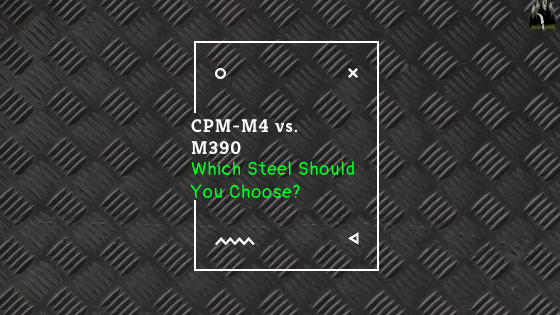When it comes to high-performance blade steels, CPM-M4 and M390 are two of the most popular choices among knife enthusiasts. Both of these steels are known for their toughness, edge retention, and corrosion resistance, but they also have some distinct differences that are worth exploring.
Here’s the short answer:
CPM-M4 and M390 are both excellent choices for high-performance knives, but they excel in different areas. CPM-M4 is extremely tough and wear-resistant, while M390 has exceptional edge retention and corrosion resistance, which is good for exposure to moisture and other corrosive environments.
With the short answer out of the way, let’s take a closer look at each steel.
Deep Dive on CPM-M4
CPM-M4 is a high-speed tool steel developed by Crucible Industries. It is a tough, wear-resistant steel that is known for its excellent performance in high-stress applications. CPM-M4 has a high carbon content, which gives it exceptional hardness and edge retention. It also contains high levels of molybdenum and tungsten, which contribute to its wear resistance and toughness.
The steel composition of CPM-M4 is as follows:
- 1.4% carbon,
- 5.2% molybdenum,
- 4% vanadium,
- 5.5% tungsten
- 4.0% chromium
The high carbon content in CPM-M4 makes it more difficult to sharpen than some other steels, but it also contributes to its exceptional edge retention. The chromium increases corrosion resistance, the molybdenum increases hardenability (which basically means that it’s easier to harden, and thus easy to manufacture), and vanadium improves wear resistance and strength.
CPM-M4 is also highly resistant to wear and abrasion, making it an ideal choice for knives that will be used in demanding applications.
Deep Dive on M390
M390 is a high-performance stainless steel developed by Bohler-Uddeholm. It is known for its exceptional edge retention, corrosion resistance, and toughness. M390 has a high level of chromium, which contributes to its corrosion resistance, and it also contains high levels of vanadium and tungsten, which enhance its hardness, wear resistance, and edge retention.
The steel composition of M390 is as follows:
- 1.9% carbon
- 20.0% chromium
- 1.0% molybdenum
- 4.0% vanadium
- 0.7% silicon
- 0.3% manganese
M390’s high chromium content makes it highly resistant to corrosion, and its high carbon content and alloying elements make it exceptionally hard and wear-resistant. M390 is also relatively easy to sharpen, despite its high hardness.
CPM-M4 versus M390
M390 is easier to sharpen than CPM-M4. This is because M390 has a slightly lower carbon content, which means it doesn’t harden as much as CPM-M4. This makes it easier to grind and sharpen, but it also means that M390 doesn’t hold an edge quite as well as CPM-M4.
In terms of corrosion resistance, M390 has a higher chromium content than CPM-M4, which gives it better resistance to rust and staining. M390 also contains high amounts of vanadium and molybdenum, which contribute to its wear resistance and toughness. This makes M390 a great choice for outdoor knives that are likely to be exposed to moisture and other harsh elements.
When it comes to edge retention, both CPM-M4 and M390 are excellent performers. However, CPM-M4 is known for holding an edge slightly longer than M390, although the difference is minimal.
In terms of toughness, both steels are very tough and can handle a lot of abuse. However, CPM-M4 is slightly tougher than M390 due to its higher carbon content, which gives it a slightly more durable edge.
So, which steel is better? It depends on your specific needs. If you are looking for a steel that can handle heavy use and abuse, and can hold an edge well, CPM-M4 might be the better choice. If you want a steel that is easier to sharpen and has better corrosion resistance, M390 might be the better choice. Ultimately, both steels are excellent performers and are suitable for a wide range of knife applications.
Recommended Knives
Here are our favorite knives in each steel.
Benchmade Bugout – M390
The Benchmade Bugout is a knife that is great for camping. This lightweight folding knife weighs only 1.85 ounces so it won’t drag you down with its weight. The Bugout is a great knife for anyone who wants a high-quality, comfortable, and lightweight EDC knife.
Check out this knife here (link to Amazon).
Benchmade Bailout – CPM-M4
The Benchmade Bailout has Benchmade’s signature AXIS lock (which makes for super smooth opening and closing), an aluminum handle, a CPM-M4 tanto-shaped blade, and weighs just 2.72 ounces. Overall, this is a high-end knife that will serve you well.
Check it out here (link to Amazon).
Conclusion
Both CPM-M4 and M390 are high-performance tool steels that offer excellent edge retention, toughness, and wear resistance. While they have some differences in their composition and properties, they are both excellent choices for knife blades. When choosing between these two steels, consider your specific needs and the intended use of the knife to determine which steel is the better choice for you.

